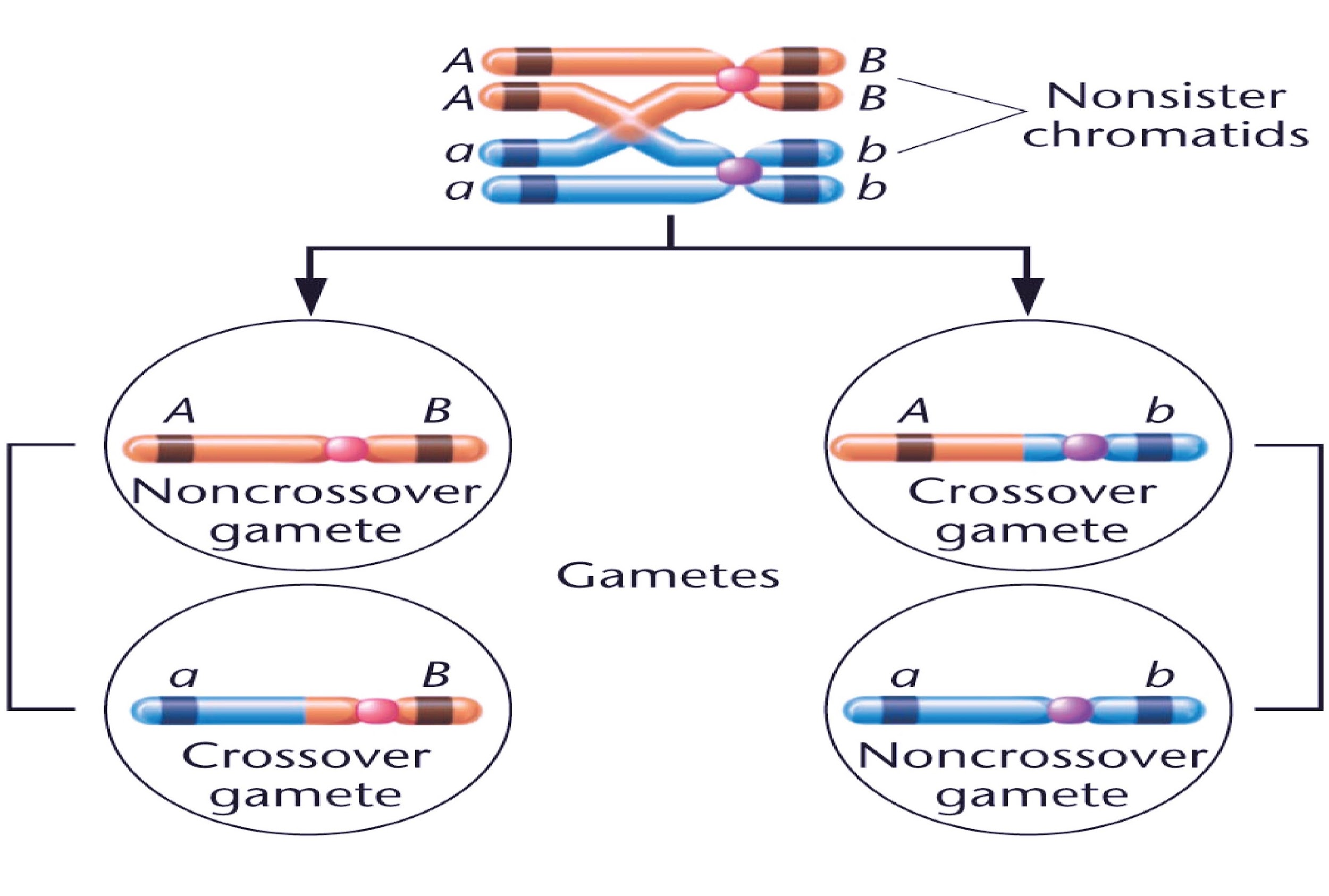
Distance between two linked genes is measured in map units that depict
(a)Ratio of crossing over between them
(b)Cross-over value
(c)Number of genes between them
(d)Both (b) and (c)
Answer
508.5k+ views
Hint: The methods used to identify the locus of a gene and the distances between genes is called gene mapping. It indicates the percentage of offspring showing recombination between a given cross's total offspring. Centimorgans or map-units calculate the distance between the two related genes.
Complete answer:
The purpose of all mapping of genomes is to place a set of molecular markers on their respective genome positions. Recombination between related genes on the chromosome can be used to map their distance apart.
The cross-over value is the percentage of crossing over that occurs between the linked genes. It demonstrates the amount of crossing over that has occurred and the relative locations of the genes on the chromosomes, therefore.
Additional Information:
One map unit is 1 percent recombination frequency.
The higher the recombination frequency (segregation) between two genetic markers, the more they are thought to be apart. By contrast, the lower the level of recombination between the markers, the smaller the physical distance between them.
Crossover's broad-scale impact is to disperse genetic differences across a population, as well as the genetic basis for selecting the most adaptable phenotypes. The value of the crossover depends on the reciprocal distance of the observed genetic loci.
So, the correct answer is, ‘Cross over value’.
Note: When genes on the same chromosome are close together they are said to be related. That means the alleles, or gene copies, will be inherited as a unit more often than not on one chromosome already together. An arbitrary unit for gene distance, usually derived from recombination percentage, but also determined by the time the gene is transferred during conjugation.

Complete answer:
The purpose of all mapping of genomes is to place a set of molecular markers on their respective genome positions. Recombination between related genes on the chromosome can be used to map their distance apart.
The cross-over value is the percentage of crossing over that occurs between the linked genes. It demonstrates the amount of crossing over that has occurred and the relative locations of the genes on the chromosomes, therefore.
Additional Information:
One map unit is 1 percent recombination frequency.
The higher the recombination frequency (segregation) between two genetic markers, the more they are thought to be apart. By contrast, the lower the level of recombination between the markers, the smaller the physical distance between them.
Crossover's broad-scale impact is to disperse genetic differences across a population, as well as the genetic basis for selecting the most adaptable phenotypes. The value of the crossover depends on the reciprocal distance of the observed genetic loci.
So, the correct answer is, ‘Cross over value’.
Note: When genes on the same chromosome are close together they are said to be related. That means the alleles, or gene copies, will be inherited as a unit more often than not on one chromosome already together. An arbitrary unit for gene distance, usually derived from recombination percentage, but also determined by the time the gene is transferred during conjugation.

Latest Vedantu courses for you
Grade 11 Science PCM | CBSE | SCHOOL | English
CBSE (2025-26)
School Full course for CBSE students
₹41,848 per year
Recently Updated Pages
Earth rotates from West to east ATrue BFalse class 6 social science CBSE

The easternmost longitude of India is A 97circ 25E class 6 social science CBSE

Write the given sentence in the passive voice Ann cant class 6 CBSE

Convert 1 foot into meters A030 meter B03048 meter-class-6-maths-CBSE

What is the LCM of 30 and 40 class 6 maths CBSE

What is history A The science that tries to understand class 6 social science CBSE

Trending doubts
Father of Indian ecology is a Prof R Misra b GS Puri class 12 biology CBSE

Who is considered as the Father of Ecology in India class 12 biology CBSE

Enzymes with heme as prosthetic group are a Catalase class 12 biology CBSE

A deep narrow valley with steep sides formed as a result class 12 biology CBSE

An example of ex situ conservation is a Sacred grove class 12 biology CBSE

Why is insulin not administered orally to a diabetic class 12 biology CBSE




